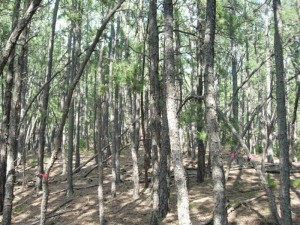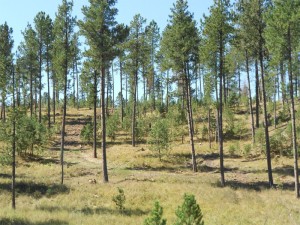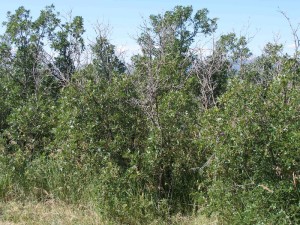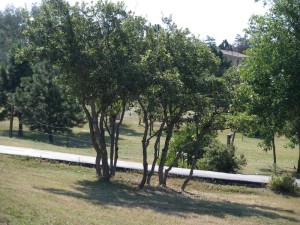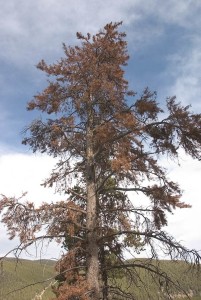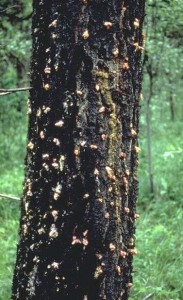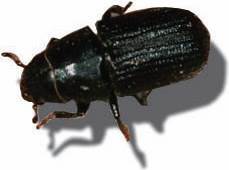Forestry and Firewise keep Woodmoor desirable.
In 2006, Woodmoor completed a Community Wildfire Protection Plan (CWPP)whose primary objective was to develop a 10-year plan for improving forest health, reducing vegetative fuel hazards and improving community safety. According to the CWPP, approximately 60% of the single-family lots are in the “Severe” and “High” hazard class. These areas have a pine crown cover of 80-100% and the “Severe Hazard” areas have additional understory of Gambel oak and pine saplings that serve as hazardous ladder fuels.
In addition to the native hazardous fuels types, Woodmoor is challenged by historical residential home design. Initially developed in the 60’s and 70’s, the developer’s vision was to have wooden homes with wooden roofs and wooden decks nestled tightly into the pine forest. Over time, the look and feel of Woodmoor has slowly changed to become more Firewise. Wood sided homes are being replaced with stucco, wood shake roofs are being replaced with an assortment of fire resistant roofing and forests around residents’ homes are being thinned to produce a healthier forest more appealing to wildlife.
Over the last several years, Woodmoor has found a benefit from hosting chipping days for residents. This provides them an easy means to dispose of slash and dead vegetative fuels and even provides a safe means of disposing of mountain pine beetle-infested trees.
Woodmoor’s Firewise status has been a very positive influence providing residents with the momentum, resources and encouragement to become a safer and more Firewise community in which to live.
What You Need to Know
Do I Need a Permit to Cut Trees on My Lot?
Ponderosa Pine trees are protected in Woodmoor. A resident will need a permit to cut only larger Ponderosa Pines (greater than 4” in diameter at chest height), beyond 30 feet from a house and deck (outside wildfire defensible space), or beyond 5 feet of a driveway. Any tree that is not a Ponderosa Pine tree may be removed at the homeowner’s discretion (i.e. Aspens, Scrub Oak, Elms, Cottonwoods, other pine species).
Dead trees of any species do not require a permit for removal. Dead/dying trees are considered a covenant violation and should be removed off of the lot in their entirety (stumps cut to ground level) within thirty (30) days of the tree dying (turning brown and/or loosing leaves/needles).
To obtain a permit, you may request a Forestry Lot Evaluation using our online form. Or you may call the Forestry Administrator during normal business hours (719) 488-2693 ext. 4, or via email covenants@woodmoor.org.
Are WIA Owners Responsible for Trees in the Easement?
How Do I Request a Forestry or Firewise Evaluation?
You may request a Forestry or Firewise Lot Evaluation using our online form. Or you may call the Forestry Administrator during normal business hours (719) 488-2693 ext. 4, or via email covenants@woodmoor.org.
Please be advised that WIA Forestry Volunteers are WIA residents who volunteer to perform lot evaluations; therefore evaluations are not scheduled within the WIA office. Your contact information will be provided to a volunteer who will in turn contact you at his or her earliest convenience to schedule a lot evaluation with you. Furthermore, WIA and its volunteers have absolutely no liability for the lot evaluation report or from any conversation or communications. Lot evaluation reports are for the WIA resident (owner) only, and shall not be distributed.
My Insurance Cancelled Me! What Can I Do?
You may request a Firewise Lot Evaluation using our online form. Or you may call the Forestry Administrator during normal business hours (719) 488-2693 ext. 4, or via email covenants@woodmoor.org.
A Firewise lot evaluation is an educational opportunity for the lot owner; who will be left with a copy of the lot evaluation, recommendations for mitigation, and any tree removal permit if necessary.
What about Pine needles?
Although we advise removing any combustible material, pine needles included, within five feet of foundations and beneath decks, we try to discourage removing needles elsewhere. It does nothing to reduce the fire hazard, and too many people think that raking the needles is a substitute for defensible space. The Colorado State Forestry Department recommends leaving some needles, especially in times of drought, as they help keep what little moisture there is in place. Also please keep in mind that if you rake the pine needles into piles and leave them there, this is considered slash and is a covenant violation. If you have further questions, please contact the Forestry Administrator at 719-488-2693 extension 4.
Thinning for Tree Health
Ponderosa Pines are healthiest when they have plenty of space around them. Thinning your overcrowded Ponderosa Pines will not only make them grow bigger and healthier, it also provides a good defense from the spread of wildfires. A good rule of thumb is to allow 10 feet of spacing between the crowns (tops) of the trees. Standing at the base of your trees, look up and judge whether there is 10 feet of spacing between the crown and the neighboring crowns around it.
If you feel that your trees need thinning, submit a request for a Forestry Lot Evaluation. A trained WIA volunteer will come to your home and advise you which trees to cut and will provide you a permit at that time.
Examples of overly dense and properly thinned Ponderosa Pine Forests and Scrub Oak stands are illustrated below.
Monitoring for Disease
One of the best techniques of detecting disease in your trees is to walk around your lot several times a year and look at each and every tree in detail. Inspect the bark for signs of beetles, notice if there are any dead branches or ladder fuels that need removal and note if thinning is needed to prevent overcrowding of younger trees.
If you notice rapid, wide-spread browning of pine needles on your Ponderosa Pines, or small white or tan sappy blobs on the bark, it may be an indication that the tree has been attacked by beetles. Below are some indicators of beetle attacks.
If you suspect that you have diseased trees, submit a request for a free Forestry Lot Evaluation. A trained WIA volunteer will provide you with possible containment and treatment recommendations.


